Digital dispensing enables individual viewing experiences
Knowing the patient’s prescription isn’t the end of the story. Firstly, it is impossible to measure without the chosen frame on the patient’s face. Fulfilling the prescription is very much a symbiosis of frame and lenses. It is worthwhile mentioning that not all frames are suitable for all prescriptions, so it is really important that the customer is guided in his/her frame choice by a dispensing optician.
Then, what exactly does the visuReal® digital centration system measure, and how can it help an Eye Care Professional (ECP) for producing customized spectacles? Here are the answers:
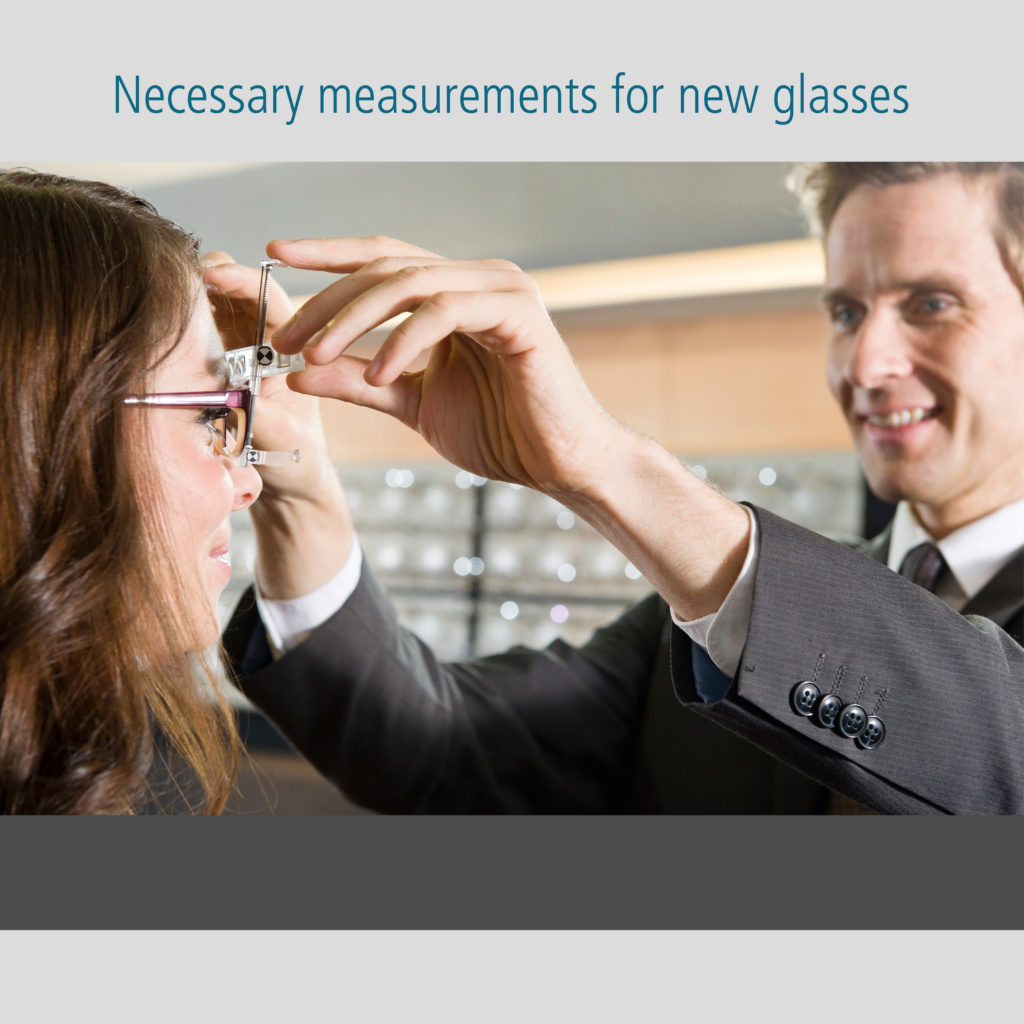
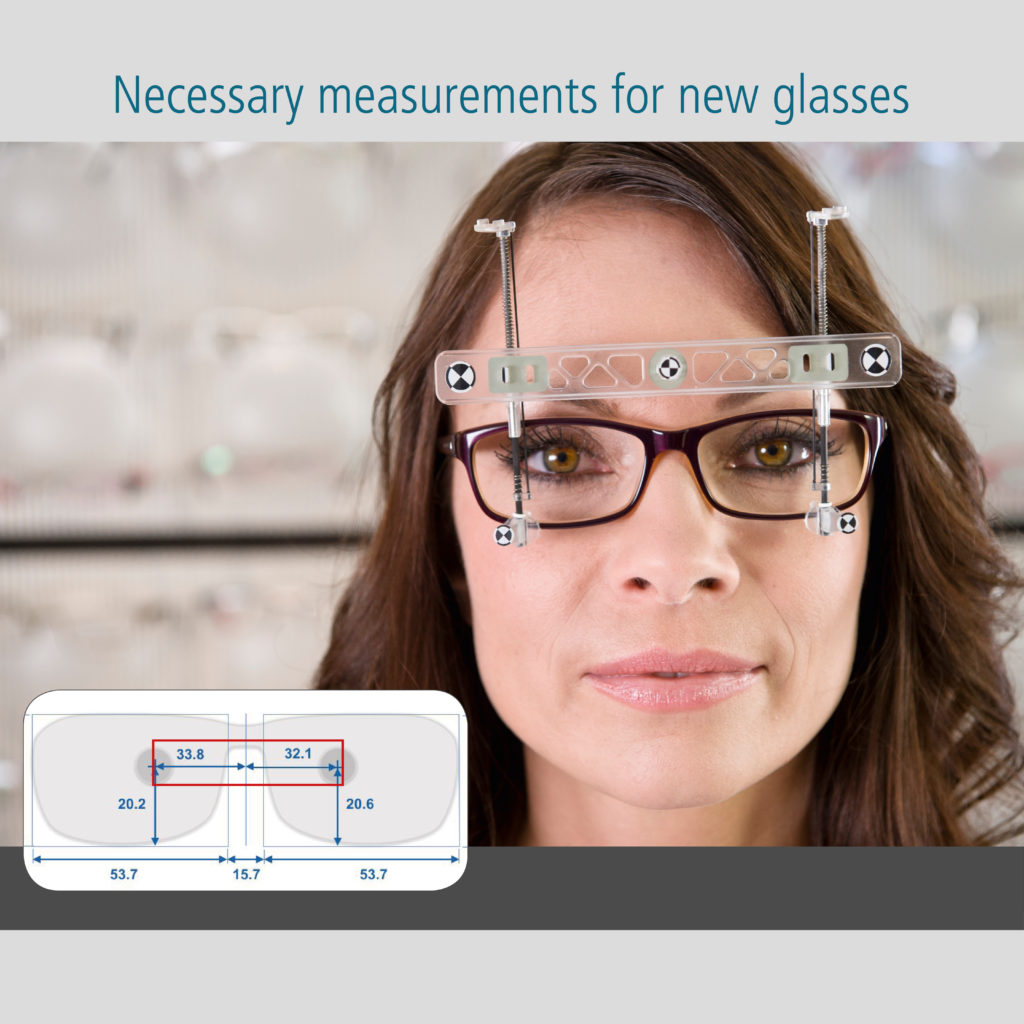
Every face is unique
Interpupillary Distance (PD) Traditionally this has been the distance between the center of your pupils when looking straight ahead. Today opticians understand that this just isn’t enough for the production of modern spectacles. Each lens must be individually position using your chosen spectacle frame. This measurement takes into account that not all noses (or faces) are equal. In fact, most are not! This measurement takes into account that the frame may be sitting slightly more to the left (or right) of the center.
Eye Point - the height is essential
Fitting Height (eyepoint) It is important that the lenses are centered vertically so they are exactly the correct height in the frame, this is dependent on the design of the lens. Our faces are very asymmetrical and so having the frame in the correct position on the face is vital for this measurement. This applies to modern Single Vision lenses as well as the Progressive ones.
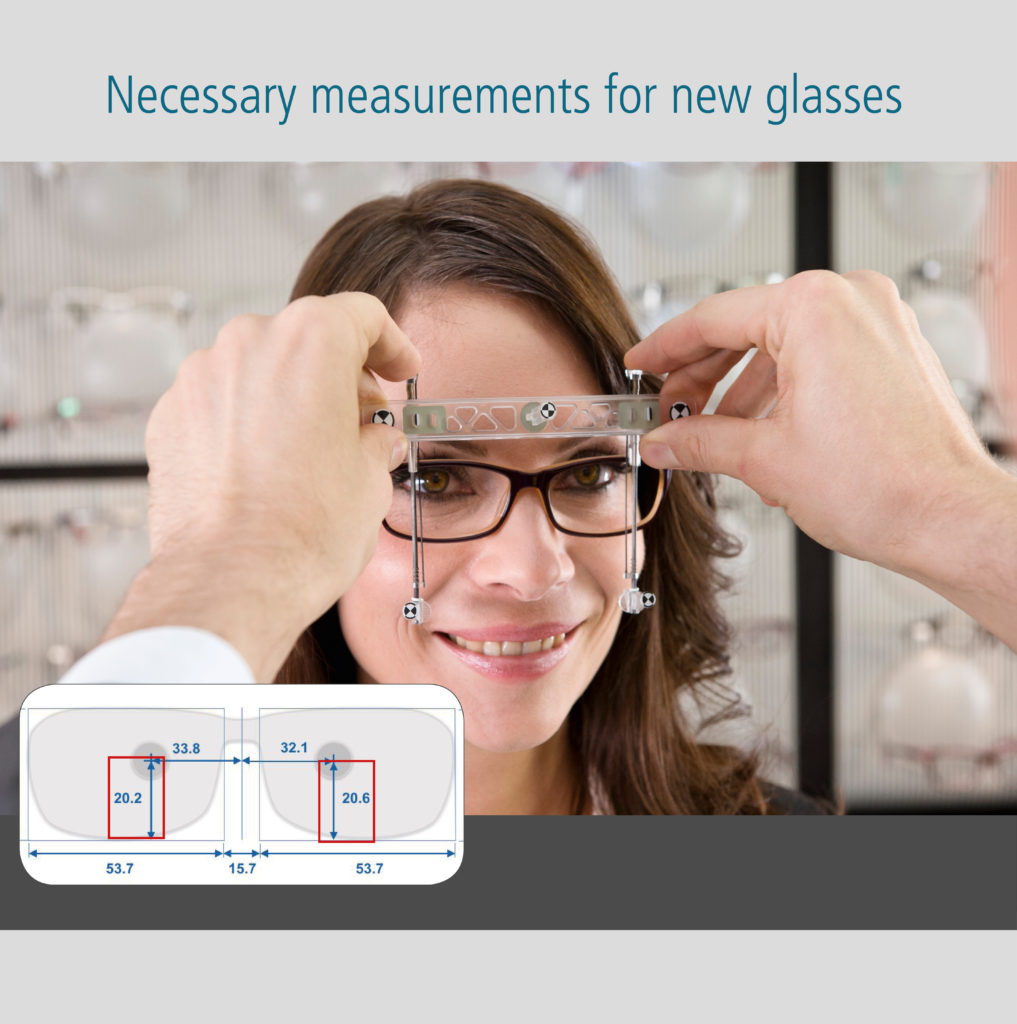
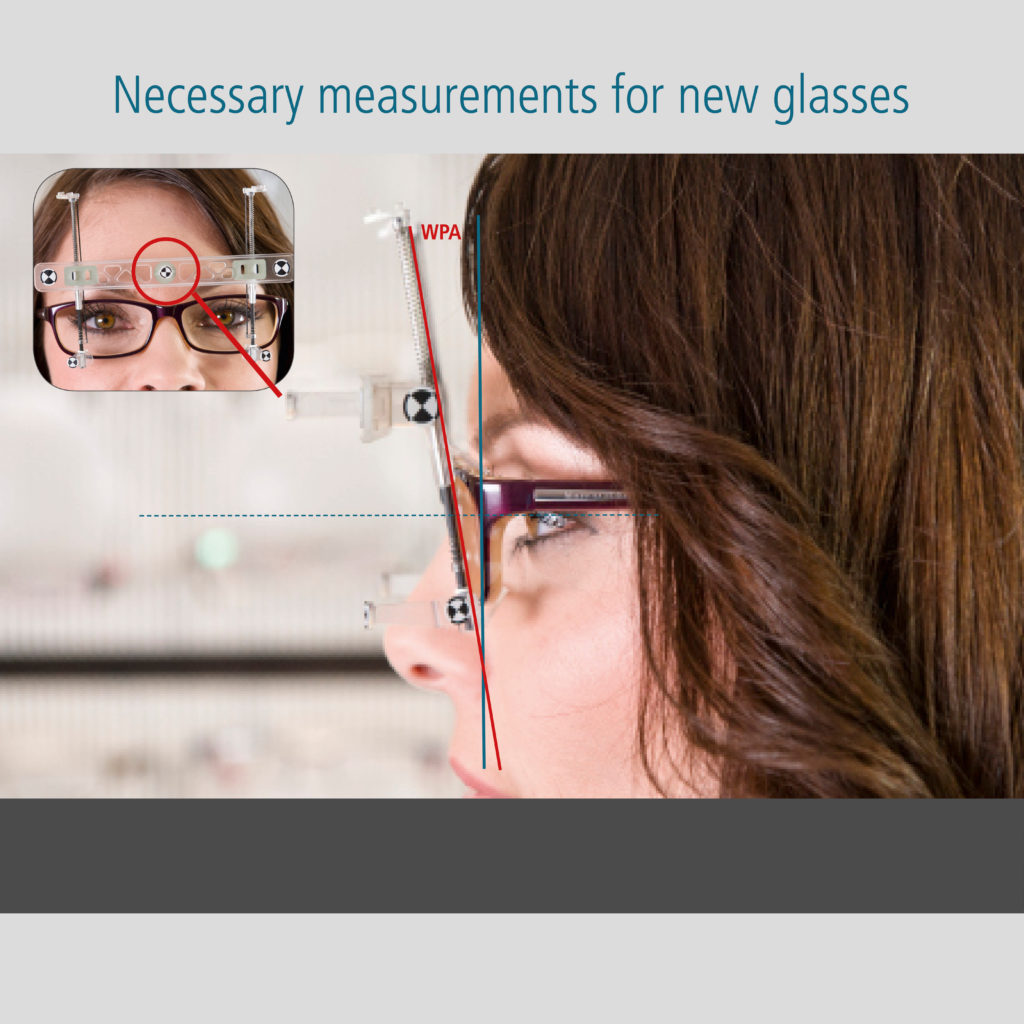
Head and frame inclination needs to be considered together
Wearing Pantoscopic Angle (WPA) This is the angle resulting from the deviation of the 90° line in front of the wearer’s face and the tilted frame line watching into far distance while wearing the frame. Some glasses have flat frames, but most will tilt slightly, so the top portion of your glasses is slightly further from your face than the bottom. In fact, for progressive lenses, a slight tilt can assist your vision by contributing to the right kind of magnification effect. Otherwise, if you look through incorrectly angled spectacles, aberrations and distortions are introduced. |
Curved or flat?
Face Form Angle Which is the measurement of the frame curvature or how much the frame curves to the shape of the face. Depending on how high or low the base curve is, it will indicate how curved or flat the frame and lenses will be. visuReal even measures the FFFA (frame face form angle) – i.e. the wearing FFA .
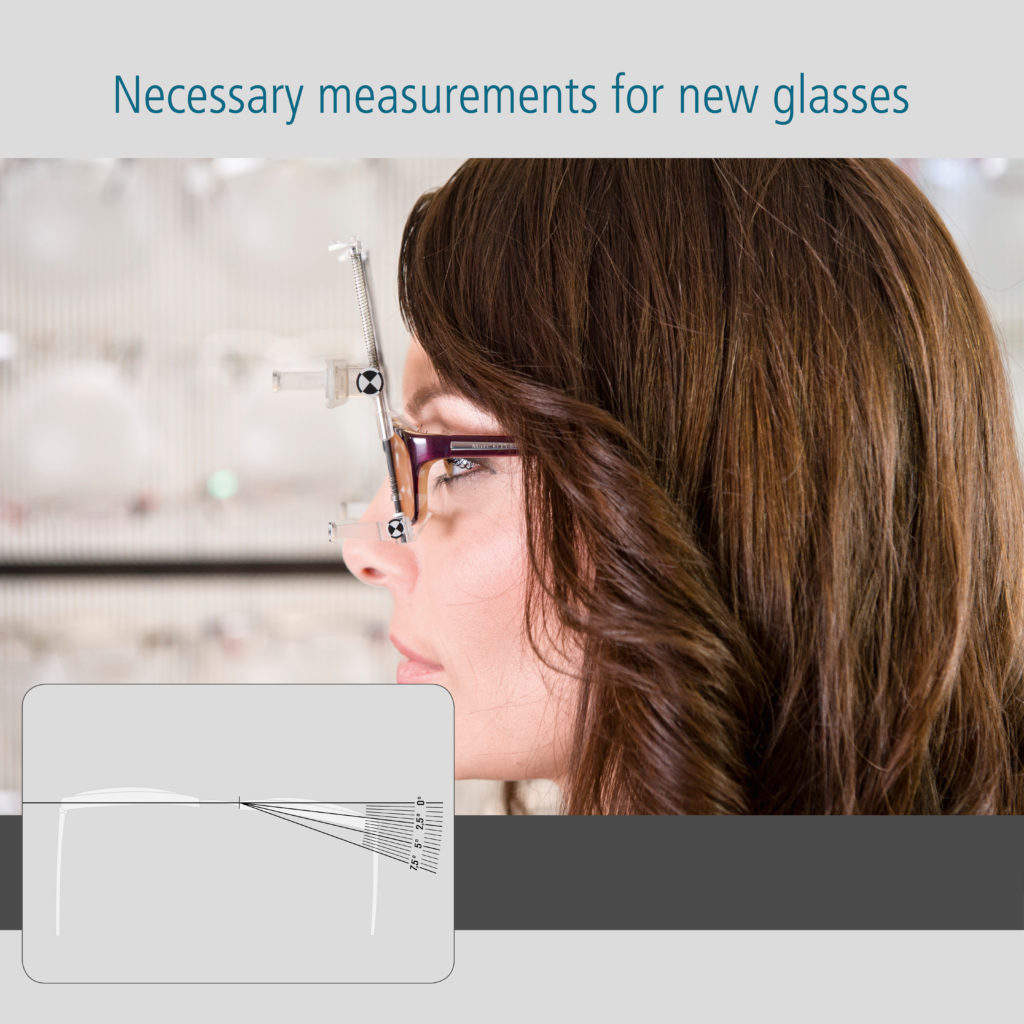
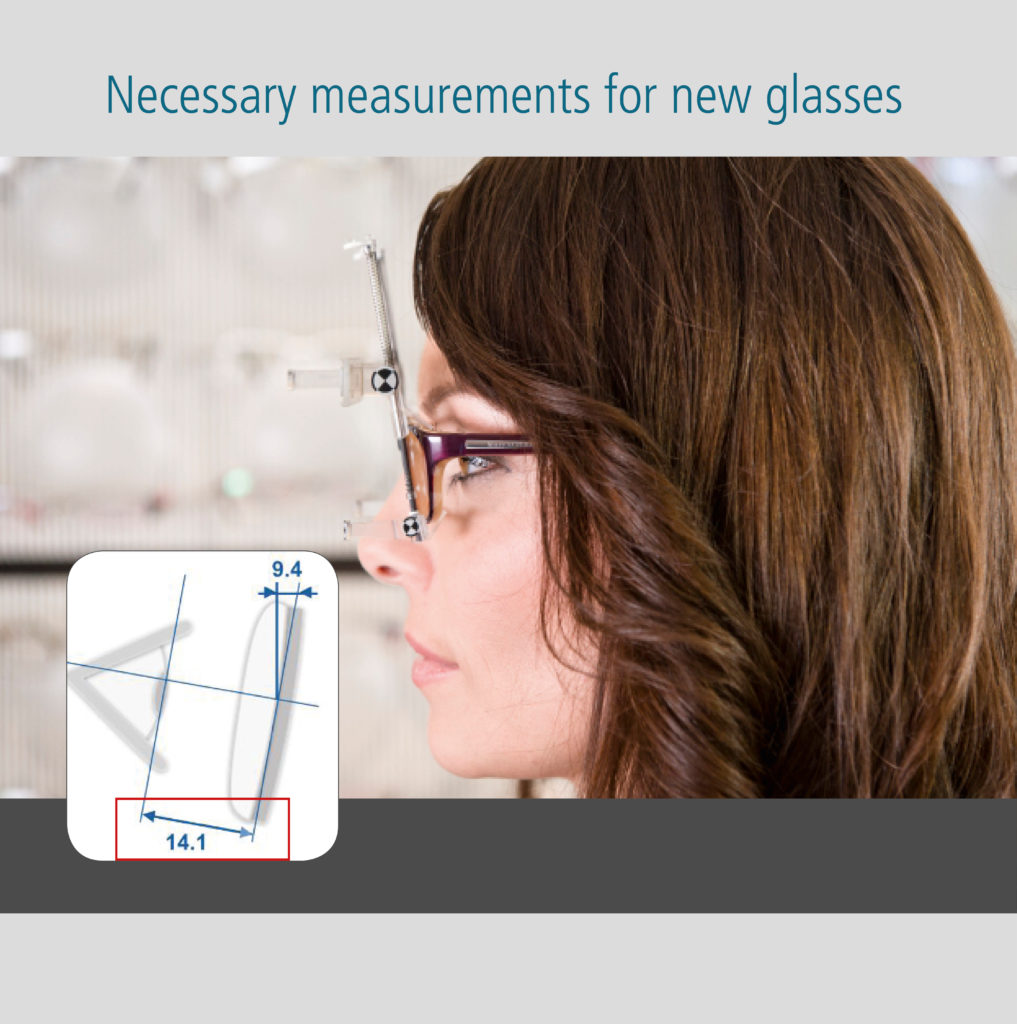
The "gap" is what matters between eye and lens back surface
Back Vertex Distance (BVD) This is the gap between the front of your eye and the back surface of the lens. The distance the lens is away from the eye alters the effective power of the lenses thus it is important to compensate for this in the final lens power. Naturally, opticians need the frame on the face to measure this and we also need to know the original prescribing BVD that the optometrist used. If you are a little older and wear progressive or multifocal lenses we also need to know where the optometrist placed the reading addition when you were being tested, before, or behind, the distance lens. visuReal is even more specific in this case. It measures the so called FCD (Frame Cornea Distance), which means the distance between the frame centre and the cornea, since you cannot know exactly the lens’ back surface value in advance. |
The imaginary box
The Boxing Size of the Lens The boxing system is based upon the idea of drawing an imaginary box around a lens shape with the box’s sides tangent to the outermost edges of the shape. The system uses the sides of the boxes as reference points for the standard system of measurements which includes: A-size, B-Size or frame centerline and distance between lenses (DbL).
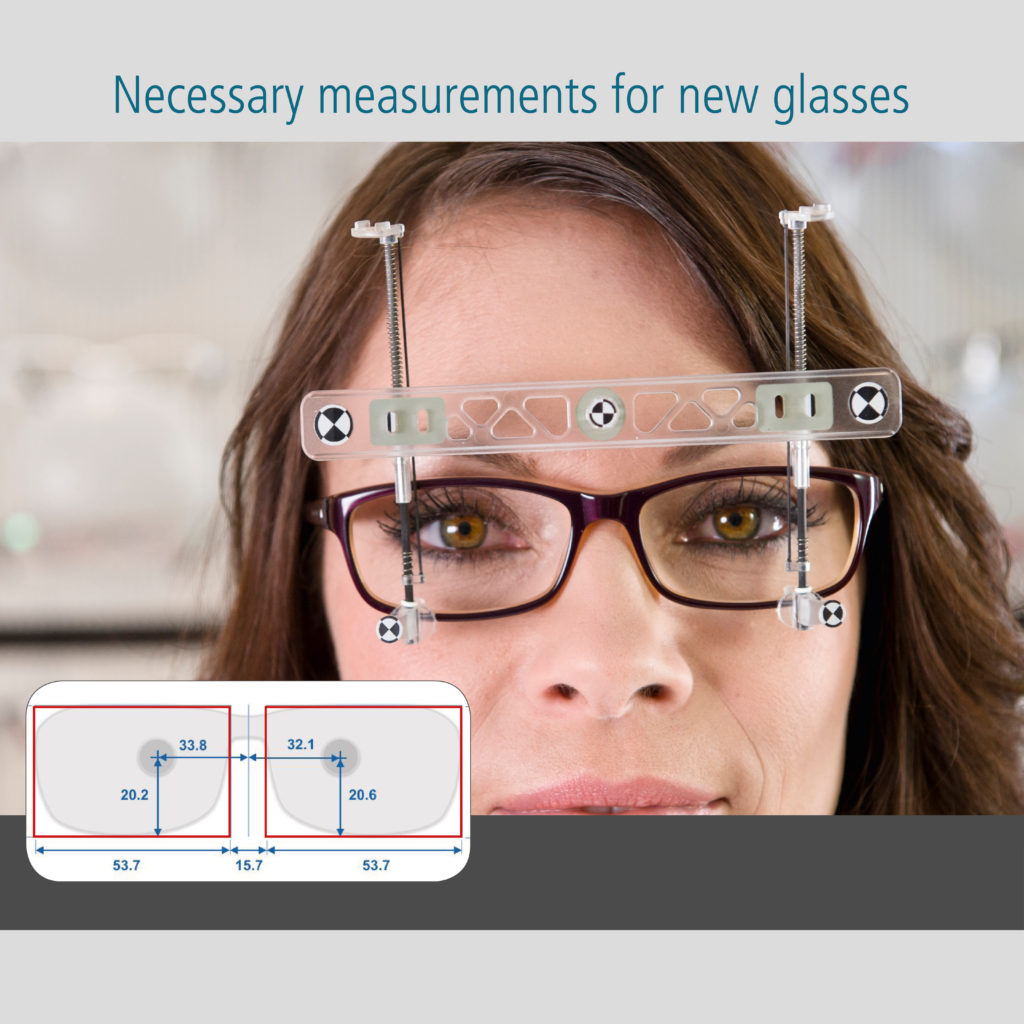
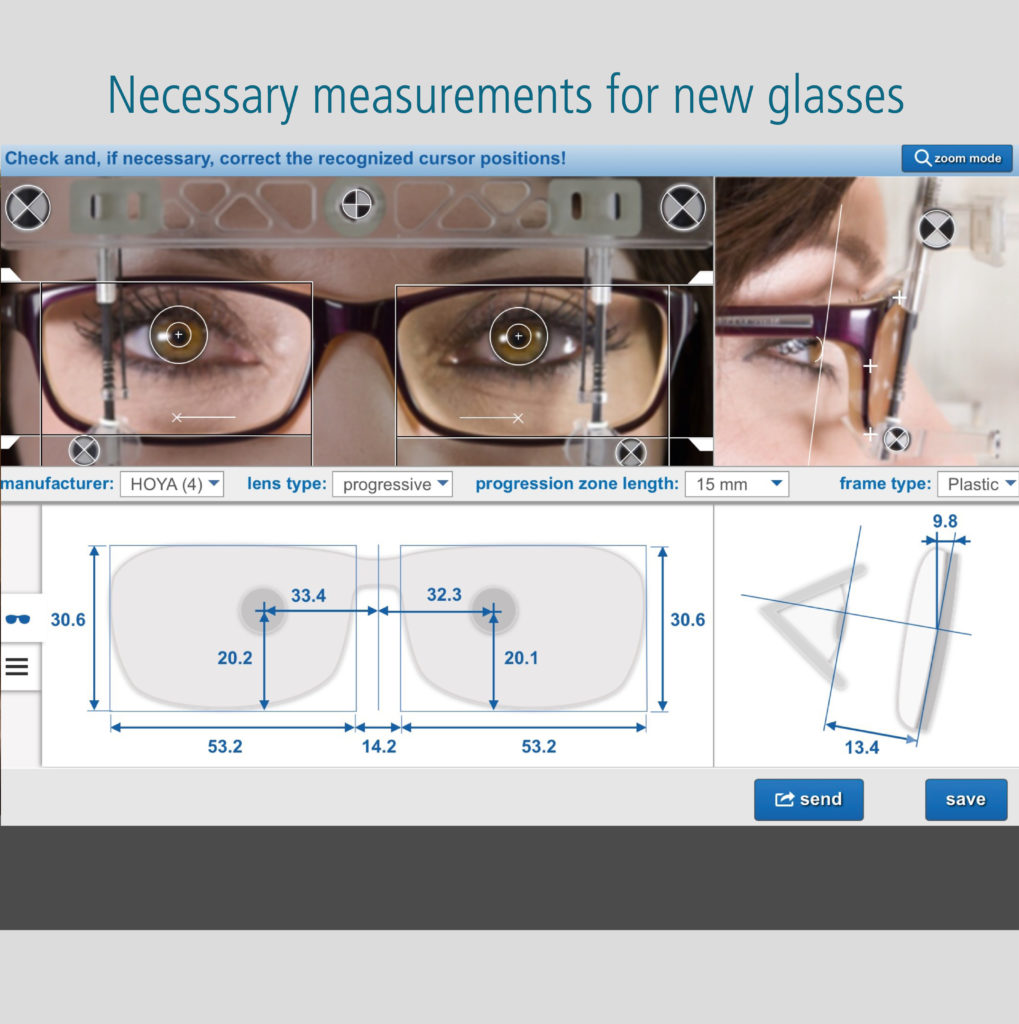
Precise, individual data acquisition - they key to better compatibility
| Precise data provided by the device are being considered from the very beginning of the production and affect the optical design throughout the whole production process, thus providing the best available visual experience for the wearer. Products based on individual parameters guarantee personalized results in all cases. The visuReal digital video centration system helps to prevent non-adaptation problems in the case of progressive lenses. Furthermore, it eases the fitting process of customized optical lenses, thus creating a comfortable environment for your customer when acquiring a new pair of glasses. |